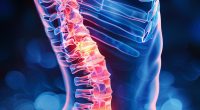Dilated Cardiomyopathy
What is cardiomyopathy?
Cardiomyopathy is a cardiac pathology characterized by damage to the myocardium (the muscular, mid-lying layer of the heart). The disease is characterized by impaired blood circulation throughout the body, negatively affecting its functioning and threatening human life.
Types of cardiomyopathy
There are two main types of cardiomyopathy, depending on the etiology of the disease: ischemic (associated with coronary heart disease) and non-ischemic (unrelated to CHD).
Non-ischemic cardiomyopathy, in turn, is subdivided into three types:
- Dilated – characterized by an increase in the volume of all cavities of the heart muscle, from which there is a decrease in the contractile function of the myocardium.
- Hypertrophic – characterized by thickening of the heart walls with simultaneous reduction of the internal space. It is characterized by enlargement of either the right or left ventricle.
- Restrictive – characterized by a decrease in ventricular diastolic volume (less blood flow in the relaxation phase), deterioration of elasticity, and flexibility of the heart walls.
Cardiomyopathy, over time, can progress and provoke complications from various organs and systems. That is why it is necessary to consult a doctor at the first pathology symptoms.
Understanding Dilated Cardiomyopathy
Dilated cardiomyopathy involves the enlargement of the heart’s ventricles and thinning of the heart muscle, impairing the heart’s ability to pump blood efficiently. Over time, it can affect other heart chambers and lead to a cascade of cardiovascular complications.
Symptoms of cardiomyopathy
The disease’s primary danger is its asymptomatic course in the early stages. A person can live for a long time without realizing the presence of a severe cardiac pathology. Often, cardiomyopathy is diagnosed randomly when undergoing ECG.
In later stages, the following symptoms may occur:
- shortness of breath (especially when exercising or lying down);
- pale or bluish skin;
- edema;
- dizziness, general weakness;
- pain in the chest area;
- palpitations;
- blueing of the fingertips;
- loss of consciousness.
The clinical picture of the disease is nonspecific, from which cardiomyopathy can be confused with other pathological changes in the body. In this regard, an experienced, qualified specialist should only carry out the diagnosis.
Causes of cardiomyopathy
There are two groups of causes of cardiac pathology: congenital and acquired.
Congenital cardiomyopathy occurs due to a violation of the process of laying myocardial tissue at the stage of embryonic development. Anomaly can occur due to improper nutrition, smoking, or alcohol consumption by a pregnant woman. Also, inflammatory diseases during pregnancy and a woman’s exposure to stress can affect the abnormal development of the myocardium.
Acquired cardiomyopathy develops due to one of the following causes:
- toxic effects of medications or alcohol;
- exposure to certain viral infections (herpes virus, influenza);
- endocrine disorders in the body (metabolic disorders);
- improper nutrition, and deficient micronutrients vital for the body (selenium, carnitine, vitamin B).
Factors that increase the risks of cardiomyopathy are also highlighted. These include:
- hereditary predisposition;
- diabetes;
- obesity;
- ischemic heart disease;
- hypertension.
If you are in the risk group for heart disease, our clinic specialists recommend undergoing electrocardiography at least once every six months, followed by mandatory consultation with a cardiologist.
Diagnosis of cardiomyopathy
Treatment of cardiomyopathy is a process, the complexity and duration of which depend on the stage at which the disease was detected. That is why the most crucial place in the treatment of cardiac pathology is given to complex diagnostics.
At the first appointment, the cardiologist collects an anamnesis, interviews and examines the patient, and conducts a thorough auscultation. The main task of the specialist is not only to identify pathology but also to understand the cause of its occurrence for further elimination of provoking factors. After examination, the doctor gives a referral for additional laboratory and instrumental studies.
Diagnostic procedures performed most often:
- ECG is one of the main methods of examining the heart’s activity, in which the heart’s electrical activity is recorded.
- Chest radiography is a classic projection study to detect an increase in the size of the heart.
- Echocardiography is an ultrasound examination that reveals the size, configuration of the heart, and heartbeat patterns.
- Cardiac chamber catheterization is an invasive method of examination, during which a unique tube (probe) is inserted into the heart cavity to determine the functional state of the myocardium.
- Myocardial biopsy – examination of heart muscle tissue for further diagnosis in the laboratory.
- Blood and urine tests – laboratory tests necessary to understand the cause of the pathology.
Treatment of cardiomyopathy
Treatment tactics for cardiomyopathy depend on how much the pathology is developed. Drug treatment is possible if the disease is detected early and there are no complications.
Therapy includes taking the following medications:
- anticoagulants;
- beta-blockers;
- calcium channel blockers;
- antiarrhythmic drugs;
- of cardiac glucosides;
- diuretics.
In addition to taking medications, the patient is prescribed a special diet with a limited fat and salt content, as well as recommended daily physical activity and avoidance of bad habits.
Surgical treatment of cardiomyopathy
In severe stages of cardiomyopathy or if conservative methods of treatment have not brought the expected result, our specialists recommend surgical intervention.
Surgical methods of treatment of pathology, used to date in the global practice of management of patients with cardiomyopathy:
- pacemaker implantation;
- implantation of a cardioverter-defibrillator.
- heart transplantation
After the surgical intervention, the specialists of our clinic provide all necessary recommendations for rapid postoperative recovery and monitor the effectiveness of the treatment.
All these treatment options are available in more than 550 hospitals worldwide (https://doctor.global/results/diseases/dilated-cardiomyopathy). For example, Permanent pacemaker implantation can be performed in 13 clinics across Israel for an approximate price of $8.0 K (https://doctor.global/results/asia/israel/all-cities/all-specializations/procedures/permanent-pacemaker-implantation).
Living with Dilated Cardiomyopathy
Managing this disease requires a comprehensive approach:
- Regular monitoring and follow-up with a healthcare provider.
- Adherence to treatment plans and medication regimens.
- Lifestyle adjustments to support heart health.
- Emotional and psychological support to navigate the challenges of living with a chronic condition.
Advancements in Treatment
Recent advancements in the understanding and treatment of dilated cardiomyopathy offer hope:
- Gene therapy and stem cell research are exploring ways to repair or regenerate heart tissue.
- Newer medications are being developed to better manage heart failure symptoms and improve quality of life.
Conclusion
Dilated cardiomyopathy is a complex condition with significant health implications, but with early detection, appropriate treatment, and lifestyle modifications, many individuals with DCM can lead active, fulfilling lives. Ongoing research continues to enhance our understanding and management of this heart condition, promising better outcomes for those affected.



